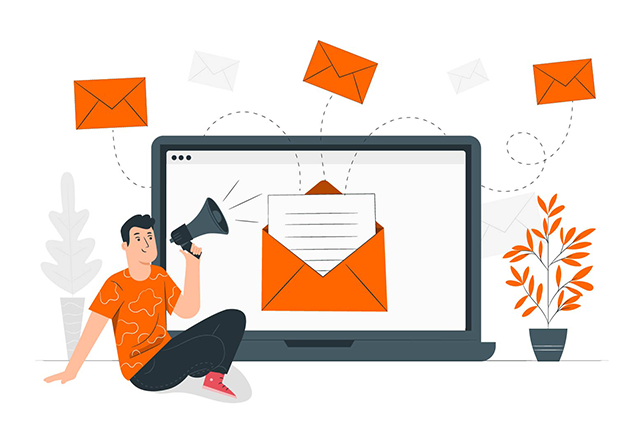An Appointment Scheduling System
-
Home
-
An Appointment Scheduling System

An Appointment Scheduling System
digital solution designed to streamline the process of booking, managing, and tracking appointments for individuals, businesses, and organizations. In an increasingly digital world, it serves as a critical bridge between service providers and their clients, offering convenience, efficiency, and real-time organization of time-based interactions. Whether for healthcare consultations, salon bookings,
The Core Purpose of an Appointment Scheduling System
The primary goal of an ASS is multifaceted:
Enhance Client Convenience: Allow clients to book, reschedule, or cancel appointments 24/7 from anywhere, reducing phone tag and waiting times.
Optimize Resource Utilization: Efficiently manage the availability of staff, rooms, equipment, or other resources, minimizing idle time and overbooking.
Streamline Operations: Automate administrative tasks related to scheduling, freeing up staff to focus on core services.
Reduce No-Shows: Implement automated reminders to ensure clients attend their appointments.
Improve Data Accuracy: Centralize appointment data, reducing errors associated with manual entry and improving record-keeping.
By achieving these objectives, an ASS contributes significantly to improved customer satisfaction, operational efficiency, and overall business growth.
Key Features of a Robust Appointment Scheduling System
A comprehensive Appointment Scheduling System typically incorporates a range of features designed to cater to diverse scheduling needs:
- Online Booking Portal:
24/7 Accessibility: Clients can book appointments at any time, day or night, through a web browser or mobile app.
- Service Catalog: A clear display of available services, their descriptions, durations, and pricing.
- Provider/Resource Selection: Clients can choose a specific staff member, room, or piece of equipment.
- Real-time Availability: Display of up-to-the-minute openings based on pre-defined schedules and existing bookings.
Intuitive Interface: Easy navigation for clients to find and book their desired time slot.
- Calendar Management:
- Centralized Calendars: A unified view of all appointments across multiple staff members, locations, or resources.
- Drag-and-Drop Rescheduling: Easy modification of appointments by administrators or staff.
- Color-Coding: Visual cues to differentiate appointment types, statuses, or providers.
Synchronization: Ability to sync with popular external calendars (Google Calendar, Outlook Calendar) to avoid conflicts.
- Automated Notifications and Reminders:
- Email/SMS Confirmations: Instant confirmation messages sent upon booking.
- Reminders: Automated alerts sent to clients (and sometimes staff) a set period before the appointment (e.g., 24 hours, 1 hour).
- Follow-up Messages: Post-appointment communications for feedback or re-booking prompts.
Customizable Templates: Ability to personalize message content and branding.
- Staff and Resource Management:
- Individual Staff Schedules: Define working hours, breaks, and days off for each team member.
- Service-Specific Availability: Set which services each staff member or resource can provide.
- Capacity Management: Control the number of simultaneous appointments or resource limits.
Permission Levels: Assign different access rights to staff based on their roles (e.g., administrator, scheduler, service provider).
- Client Management (CRM-lite):
- Client Database: Store client contact information, booking history, and preferences.
- Notes Section: Add specific notes relevant to a client or their past appointments.
Automated Client Creation: New clients are automatically added to the database upon their first booking.
- Payment Processing (Optional but common):
- Online Payments: Integrate with payment gateways (Stripe, PayPal) to collect deposits or full payments at the time of booking.
- Pre-payment Requirements: Set up rules for mandatory deposits or full payments to reduce no-shows.
Refund Management: Handle cancellations and process refunds directly through the system.
- Reporting and Analytics:
- Booking Trends: Identify peak times, popular services, and busy staff members.
- No-Show Rates: Track the percentage of missed appointments to identify areas for improvement.
- Revenue Reports: Monitor income generated from appointments (if integrated with payments).
- Resource Utilization Reports: Analyze how efficiently resources (rooms, equipment) are being used.
Client Insights: Understand client demographics and booking patterns.
- Customization and Branding:
- Branded Booking Pages: Customize the booking interface with company logos, colors, and themes.
- Service Configuration: Define service durations, buffer times between appointments, and prerequisites.
Booking Rules: Set up complex rules for availability, such as specific days for certain services or restrictions based on client type.
- Integration Capabilities:
- Website Embed: Easily embed the booking widget directly onto a business's website.
- CRM Integration: Sync client data with a dedicated CRM system for comprehensive client management.
- POS Integration: Connect with Point of Sale systems for in-person payments and record-keeping.
- Video Conferencing Integration: Automatically generate video links (Zoom, Google Meet) for virtual appointments.
Marketing Automation: Connect with email marketing platforms for targeted campaigns.
Benefits of Implementing an Appointment Scheduling System
The adoption of an ASS yields significant benefits for both service providers and clients:
- For Service Providers:
- Increased Efficiency: Automates administrative tasks, freeing up staff time for core business activities.
- Reduced No-Shows: Automated reminders significantly cut down on missed appointments, reducing lost revenue.
- Optimized Resource Allocation: Ensures optimal use of staff, rooms, and equipment, preventing overbooking and idle time.
- 24/7 Availability: Allows clients to book outside of business hours, increasing booking opportunities.
- Better Data Insights: Provides valuable reports on booking trends, popular services, and staff performance for strategic decision-making.
- Improved Cash Flow: Optional pre-payment features can secure revenue upfront.
- Professional Image: Presents a modern and organized image to clients.
Reduced Phone Interruptions: Staff can focus on in-person clients or other tasks without constant phone calls for bookings.
- For Clients:
- Convenience: Book appointments at any time, from anywhere, using their preferred device.
- Instant Confirmation: Immediate peace of mind that their appointment is secured.
- Flexibility: Easy self-service options to reschedule or cancel if needed.
- Transparency: Clear visibility of available slots, services, and pricing.
- Reminders: Helps them remember appointments, reducing the chances of forgetting.
Reduced Waiting Time: Streamlined process minimizes phone queues and in-person waiting.
Common Use Cases for Appointment Scheduling Systems
ASS are versatile and used across a wide range of industries:
Healthcare: Doctor's offices, dental clinics, physical therapists, chiropractors, mental health professionals.
Beauty & Wellness: Hair salons, spas, nail salons, massage therapists, fitness studios, yoga classes.
Professional Services: Consultants, lawyers, accountants, financial advisors, real estate agents.
Education: Tutors, academic advisors, university department scheduling, parent-teacher conferences.
Automotive: Car repair shops, dealerships for test drives and service appointments.
Home Services: Plumbers, electricians, cleaners, movers for service calls.
- Government & Public Sector: DMV appointments, public health clinics, passport services.
Retail: Personal shopping appointments, product demonstrations, fitting room bookings.
Challenges in Implementing and Managing an ASS
While highly beneficial, implementing and managing an ASS can come with its own set of challenges:
- Initial Setup Complexity: Configuring services, staff availability, buffer times, and integration can be time-consuming.
- Staff Training and Adoption: Ensuring all staff members are comfortable and consistently use the system.
- Client Digital Literacy: While many clients prefer online booking, some may still require phone assistance.
- Integration with Existing Systems: Seamlessly connecting the ASS with CRM, POS, or EHR systems can be technically challenging.
- Data Security and Privacy: Especially crucial for healthcare, ensuring compliance with regulations like HIPAA or GDPR.
- Managing No-Shows (Despite Reminders): While reminders help, some no-shows are inevitable, and policies need to be in place.
- Over-Reliance on Automation: Maintaining a personal touch while leveraging automation is important for client relationships.
- System Downtime/Bugs: Technical issues with the system can disrupt operations and client access.
Cost: Subscription fees for robust systems can be a significant ongoing expense, especially for smaller businesses.
Selecting and Implementing an Appointment Scheduling System
Choosing the right ASS involves careful consideration:
- Identify Specific Needs: What services are offered? How many staff/resources? What is the volume of appointments?
- Budget: Determine how much you're willing to invest (monthly/annually).
- Essential Features: Prioritize must-have features versus nice-to-haves.
- Scalability: Can the system grow with your business?
- Ease of Use: For both clients and administrators, the interface should be intuitive.
- Integration Capabilities: Check for compatibility with your existing software ecosystem.
- Customer Support: Evaluate the provider's support quality and availability.
- Security and Compliance: Especially critical for sensitive data.
- Reviews and Demos: Read user reviews and request live demonstrations.
Once selected, implementation involves:
- Configuration: Setting up services, staff profiles, availability, and booking rules.
- Data Migration: If applicable, importing existing client data.
- Website Integration: Embedding the booking widget or linking to the booking page.
- Staff Training: Thoroughly educating all relevant staff on how to use the system.
- Client Communication: Informing clients about the new booking method.
Monitoring and Optimization: Regularly reviewing usage data, feedback, and system performance to make adjustments.
In conclusion, an Appointment Scheduling System is no longer a luxury but a fundamental necessity for businesses that rely on pre-booked interactions. It transforms chaotic manual processes into streamlined, efficient, and client-friendly operations, ultimately contributing to a more organized, productive, and customer-centric business environment.
Share this service:
Providing the Ultimate Experience in Financial Services
+91 98652 81000


